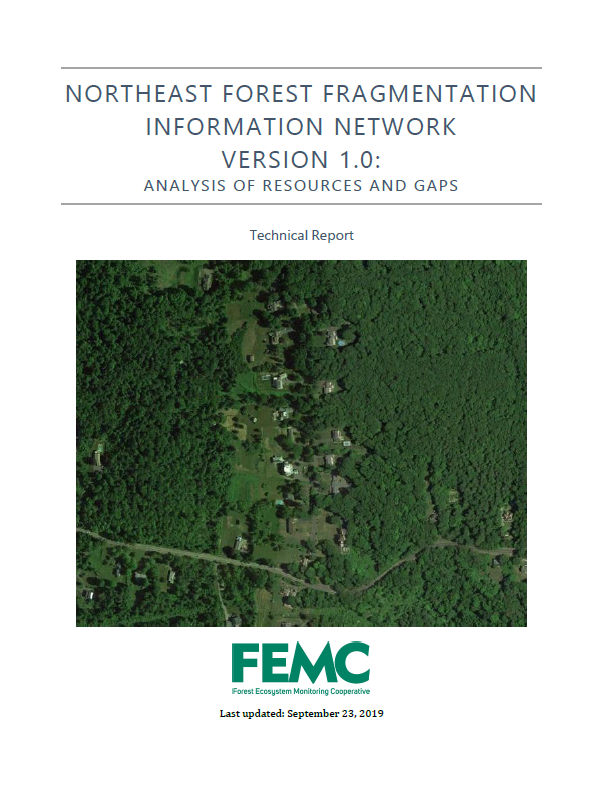FragNet
The Northeast Forest Fragmentation Information NetworkNortheast Forest Fragmentation Information Network Version 1.0: Analysis of Resources and Gaps
Download the FragNet Resource and Gap Analysis Report.
This report provides a background on the development of the Northeast Forest Fragmentation Information Network (FragNet), as well as analysis of the resources housed on FragNet at the time of launch. The goal of this analysis was to evaluate patterns in resources by topic, purpose, location, and time, as well as identify gaps that could lead to avenues for additional work. You can click here to download the full report. Questions? Contact FEMC!
Preferred Citation
Kosiba, AM, Truong, J, Duncan JA, Finnegan MO, and Pontius, J. 2019. Northeast Forest Fragmentation Information Network Version 1.0: Analysis of Resources and Gaps. Forest Ecosystem Monitoring Cooperative: South Burlington, VT. https://doi.org/10.18125/d1y18y. Available online at https://vmc.w3.uvm.edu/vmcdevel/CI4/fragnet/gap_analysis
Executive Summary
A key challenge to the forests in the northeastern United States (US) is fragmentation – the breaking up of contiguous forest cover – and the resulting reduction of important forest ecosystem processes and services. Fragmentation can affect many different aspects of a forested ecosystem, from wildlife to soils, to species composition and non-native invasions. It is also closely tied with the region’s socioeconomic issues. While forest fragmentation is a pressing issue, the information, data, and materials needed to advocate for solutions can itself be fragmented.
In 2017, the Forest Ecosystem Monitoring Cooperative (FEMC) governance committees recognized this gap in information availability and knowledge transfer. Many stakeholders acknowledged difficulty in locating pertinent resources for decision-making, planning, and education. We identified a number of important efforts underway to address these needs, like the Staying Connected Initiative, but concluded that an information clearinghouse spanning all topics related to fragmentation was lacking.
The FEMC responded to these concerns by creating the Northeast Forest Fragmentation Information Network (FragNet), a novel information clearinghouse containing hundreds of resources related to forest fragmentation and parcelization in the northeastern US. FragNet aims to provide improved access to information and resources needed to understand and address forest fragmentation and parcelization. Users of FragNet can easily select resources by type, topic, or purpose, as well as by keyword, location, time period, or a combination of these criteria. FragNet can be accessed via https://www.uvm.edu/femc/fragnet. Here we provide background on the development of FragNet, as well as analysis of the resources housed on FragNet at the time of launch. The goal of this analysis was to evaluate patterns in resources by topic, purpose, location, and time, as well as identify gaps that could lead to avenues for additional work.

